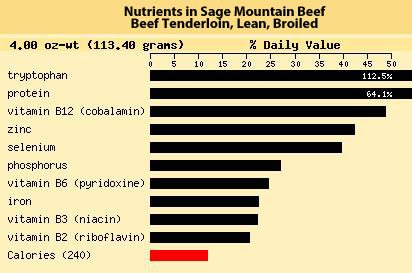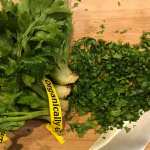Beet Greens
Are you ready to get healthy? And discover a nutrient packed, frequently discarded green to find out how it can significantly help to protect your health? Let your eyes lead the way! Plant pigment that is rich in color, like Beets are loaded with phytochemicals that hold the key to health benefits beyond those that essential nutrients provide.
According to the Produce for Better Health Foundation (PBH), phytochemicals protect and regenerate essential nutrients, and/or work to deactivate cancer-causing substances. Phytonutrients may also enhance immunity and intercellular communication, repair DNA damage from exposure to toxins, detoxify carcinogens and alter estrogen metabolism. The U.S. Department of Agriculture (USDA) notes that consuming a phytonutrient-rich diet seems to be an “effective strategy” for reducing cancer and heart disease risks.
Kathy Hoy, EdD, RD, nutrition research manager for the PBH, says eating a variety of foods helps ensure the intake of an assortment of nutrients and other healthful substances in food, such as phytochemicals, noting that color can be a helpful guide for consumers. “Nutrients and phytochemicals appear to work synergistically, so maintaining a varied, colorful diet with healthful whole foods is a pragmatic approach to optimal nutrition.” Eat the rainbow!
What do beet greens taste like?
Beet greens are synonymous with chard and collard greens, similar in taste and texture. The stalk can be eaten but takes longer to cook. If overly woody or tough, just use the leaves.
These nutrient dense greens can be cut up and added to salads & smoothies. If you’re ready to branch out from using spinach and kale, beet greens are a great next step.
Leafy greens can add an energizing boost to your breakfast smoothie that will last for hours. Greens blend into a smoothie and the kids won’t even taste it.
Smoothie Recipes:
Apple-Strawberry Beet Greens Smoothie
- 1 large apple, cored
- 1 medium banana, peeled
- 1 cup whole strawberries
- 2 cups beet greens, chopped
- 4-6 ounces of water
Papaya-Citrus
- 1 cup papaya, cubed
- 1 orange (or two small tangerines)
- 1/2 cup pineapple, cubed
- 2 cups beet greens, chopped
- 1 stalk of celery
- 4-6 ounces of water
Preparation Methods:
There is no end to ways to serve up your leafy green benefits. Experiment with different methods and seasonings to find which way you like them best. I like my greens raw and mix a handful into salads.
Not a fan of bitter? Boil.
Quick boiling beet greens “will free up acids and allow them to leach into the boiling water; this brings out a sweeter taste from the beet greens. Do not cover the pot when cooking beet greens. Leaving the pot uncovered helps to release more of the acids with the rising steam. Research has shown that the boiling of beet greens in large amounts of water helps decrease the oxalic acid content. Discard the boiling water after cooking; do not drink it or use it for stock because of its acid content”, according to whfoods.com. This method can also be used for spinach, kale, chard, collard and mustard greens.
Quick Boil Directions:
- Use a large pot (3 quart) with lots of water (a lot of water is the trick). Bring water to rapid boil.
- While water is coming to a boil, press or chop garlic and let it sit for at least 5 minutes to enhance its health-promoting properties.
- Wash beet greens but do not soak the leaves in the water as water-soluble nutrients will leach.
- When water is at full boil, place beet greens into the pot. Do not cover. Cook beet greens for 1 minute; begin timing a soon as you drop the greens into the boiling water.
- After the beet greens have cooked for 1 minute (do not wait for water to return to a boil), use a mesh strainer with a handle to remove beet greens from the pot. Press out excess liquid.
- Toss beet greens with a home-made Mediterranean dressing, balsamic or hot pepper sauce (peppers and apple cider vinegar) while it is still hot. Mediterranean dressing: 1 TBS extra virgin olive oil, 1 tsp fresh lemon juice, 1 medium clove garlic, sea salt and pepper to taste.
Serve:
Cover with farm fresh poached eggs, saute with onions and bacon, top on pizza, pair with pine nuts, apricots and walnuts, add to scrambled eggs or chili, toss into pasta with caramelized onions and mushrooms, add to stir-fry, crisp them into chips for snacking, or layer into a delicious vegetable lasagna alternating layers of roasted butternut squash (mashed with butter, roasted garlic, and sage) and sauteed beet greens with garlic in extra virgin olive oil and organic grass-fed butter. Yum! These are just a few ideas so get creative and eat your greens!
*According to The Truth About Cancer, in order to receive the greatest nutritional oomph, you should eat your greens with a small amount of a healthy fat. Carotenoids and vitamin K are fat-soluble and you increase your absorption by combining your greens with healthy oils such as grass-fed raw butter, olive or coconut oil. No matter which method you choose, don’t be afraid to mix it up.
Nutritional Benefits:
Beet greens are bursting with vitamin K, vitamin A (in the form of carotenoids), vitamin C, copper, potassium, manganese, vitamin B2, magnesium, vitamin E, fiber and calcium. They are a very good source of iron, vitamins B1, B6, and pantothenic acid, as well as phosphorus and protein. Beet greens are also a good source of zinc, folate and vitamin B3.
Like most fruits and vegetables, beet greens contains all essential amino acids. They are particularly high in the essential amino acid, tryptophan, which can be used by the body to produce the neurotransmitter, serotonin, regulating mood and sleep cycles.
They are essential to help you stay young, keep your vision healthy, lower bad cholesterol, reduce your risk of heart disease, protect your bones, and lower cancer risk. Colorectal cancer doesn’t stand a chance if you power up your day with plenty of leafy greens!
Women who are pregnant should particularly up their intake of leafy greens and other folate-rich foods to aid in fetal development.
How To Store:
Keep leafy greens in the refrigerator and store in clear plastic tubs or zip top bag with a folded paper towel to absorb any excess moisture but leave the bag open a bit to promote air circulation. Never leave leafy greens in plastic produce bags as they will go bad very quickly.
Fresh greens, stored properly, should last up to 5 days in your crisper drawer.
Local Farmers.
If you knew more about what it takes to be a Farmer, you would revere your local Farmers and their Field workers as “heroes” in the modern food revolution. Learn more by visiting www.SageMountainFarm.com
“Beef up” on organic/pastured meats and produce instead of conventional. While you’re munching on yummy greens, make the switch to organic/pastured meats and dairy instead of using conventional animal products. According to Consumer Reports, a whopping 80% of all antibiotics sold in the United States are used for livestock and other farm animals. If you are serious about your health goals, you don’t want that in your body! Learn more by visiting www.SageMountainBeef.com
Take time for gratitude and appreciation. Thank your local farmer!
Comments, suggestions and questions?
Contact me directly: amy@sagemountainfarm.com
Visit www.SageMountainFarm.com &www.SageMountainBeef.com
for more information about our farm.
Together, let’s get healthy!

Many blessings to you and yours!











